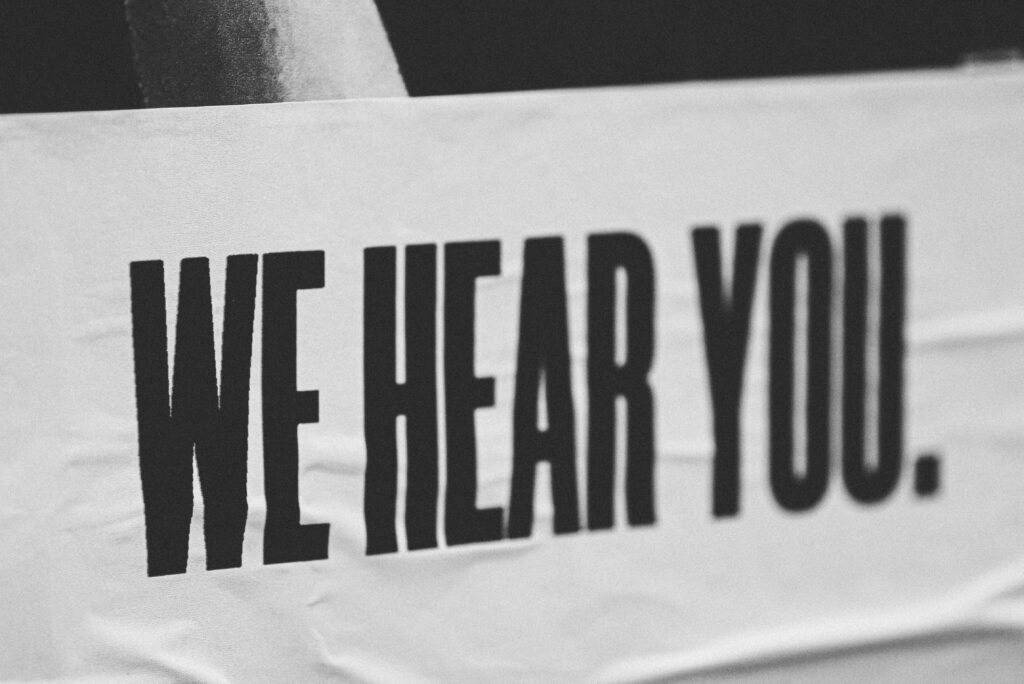People ask me a lot if there is a difference between experiences and creating customer loyalty when you are a business-to-business (B2B) organization as opposed to a business-to-customer (B2C) one. The short answer is there isn’t. The long answer is the following newsletter inspired by a recent podcast and a business pickle by one of our listeners.
Here’s what Gad’s pickle is:
Hello. My question is coming from a machine learning company. We have a client that is interested in creating more stickiness or more loyalty to his own B2B clients. And he is selling raw materials, which sounds like something that is more difficult to distinguish or to be specialized. And the question is, how can we create a loyalty or stickiness to his customers? Is it possible to treat B2B and B2C similarly? Can you refer me to resources in that direction? Thank you.
Gad’s is a common problem, so hence, my focus on it for our newsletter today. Creating loyalty in a B2B relationship is a common concern for organizations.
As I said before, creating loyalty in the B2B world uses the same concepts as creating loyalty in the B2C world. Why are they the same? They are the same because in both cases you are dealing with people.
Loyalty is an emotional relational concept. If we were all cold, rational robots, there would be no loyalty. Each transaction would be evaluated in such a way as to maximize utility, and we would be deciding everything afresh each time.
Loyalty implies emotion. So, if you are not managing the emotional side of your experience, then you are not giving yourself any room for loyalty to form.
Make a Deposit in the Customer’s Emotional Bank Account
This concept is from Stephen Covey’s book, The Seven Habits of Highly Effective People. Covey discusses relationships with others as having an emotional bank account into which your interactions make deposits and withdrawals.

Consider your personal relationships. What makes that person loyal to you? What makes you loyal to them? I’ve been married to my wife, Lorraine, now for 40 years and made a lot of deposits into Lorraine’s emotional bank account, and vice versa. I take care of her, and she takes care of me.
We bring this concept of the emotional bank account into our work in our global Customer Experience consultancy. For example, we did a lot of work for one of the world’s largest construction equipment companies. You might think that construction customers were more concerned about resale value, durability, and pricing, and they are. However, our Emotional Signature® Research revealed that these so-called rough and tough construction customers also felt it was essential the equipment company cared for them as a person. Surprisingly, we learned that they want an emotional relationship, too.
If you were to establish an emotional bank account with your customer and make regular deposits into it, you have a balance there of good feelings. Then, should something happen, and you need to make a withdrawal, you are covered. In other words, customers with whom you have some credibility built up won’t leave you instantly when something happens they don’t like. It’s organizations that don’t make those investments into the customers’ emotional bank account that have problems.
Do What You Say You Are Going to Do
Building trust with your customers requires you to do what you say you will when you say you will do it. This action builds a foundation where the customer feels cared for as a person, which moves them closer to loyalty.
It’s hard to imagine being loyal to a person or an organization that you don’t trust and that you don’t feel cares for you. However, not doing what you say you are going to do conveys exactly that impression to customers. You have impeded the way to customer loyalty by not establishing trust. It surprises me how often this happens in business.
Customers are people, and so are employees.

Loyalty for the company also happens when customers can see team members “speaking with one voice” and supporting each other.
That cohesive team is essential. You might not interact with the other departments all the time, and might even consider them as distinct entities because you only ever go to their building once a year or so. However, a customer sees your company as the same entity. They don’t care which part of the entity they are speaking with at the time.
Be Yourself
Don’t try and be something that you’re not, because you get to know customers over time. If I think back to my time in telecoms, we would be dealing with a top one hundred and fifty organizations, and they would sign up deals for telephone lines for three to five years, and you would be managing that account or be the primary interface for that account the whole time. You can’t pretend to be somebody else for years; you have to be yourself.
In addition, you should discover what customers really want. What are their ambitions? Do they just want a quiet life? Do they want promotion? How can you help them?
I say the following to our clients, “Our job is to help you look good.” It is, too, because if they choose us as a supplier, and then we muck it up, it reflects poorly on them.
Individuals have business and personal needs. This person has needs for their company and other needs for their career and emotional state. For example, maybe they can’t handle another stressor in their life right now, so you need to help them relieve stress. This way you build loyalty at the business level by providing the service and managing the account well and at the personal level for the individual with whom you have the relationship.
Also, you should also understand the organization’s politics. By understanding the political pressures that that person is under and putting yourself in their shoes, you can see ways that you can help them achieve their goals.
Don’t Let People Walk All Over You.
Loyalty does not mean that you do everything the customer wants. The customer has to understand as well that there’s win-win. There are times when you have to let a customer go.
You can’t let your customer think that you are going to give them everything they want because, at the end of the day, they will lose respect for you. You can’t be loyal to people you don’t respect, and neither can they. So sometimes you’ve got to deliver bad news. (However, going back to that emotional bank account, you should have the credit to handle it when you do.)
Be in it for the Long Term.
Sometimes you have to take a short-term hit for a long-term gain. Let me give you a personal example that may help.
As I mentioned, we sold three- to five-year contracts with organizations for telephone circuits. Usually, the price would go down over that time, and when it came time to renew the contract, we would be more expensive than the other companies trying to woo them away from us. Many organizations would come to us with these offers and tell them they were making the switch. It was a cutthroat business.
We overcame this disadvantage by doing things for customers that were over and above their contract. Then, we estimated the costs of what we did that we didn’t charge them for and showed them the extra value we supplied. Our point was that, yes, the competition might be cheaper at a unit-by-unit cost. However, all the extra things we did added a lot more value to our proposition.
We still lost some customers. However, as many as half of the ones that were going to leave would stay based on that presentation. In that way, doing the extra stuff and not charging for it was taking that short-term hit for a long-term gain.

Compete on the Experience Instead of Price
Many B2B verticals experience a rush towards commoditization. From raw materials to machine parts to other types of offerings, the commoditization makes it difficult to distinguish your company from the next. In that case, firms often default to competing on price, and that’s no way to build loyalty.
Instead of a narrow focus on the product or service itself, consider competing on the experience. Then, use the buying process, the receiving and installation experiences, the support service, and reordering events to distinguish yourself from the competition. A more pleasant, frictionless, and easy experience will win customers over to you.
Don’t Muddle Inertia with Loyalty
Customers are not always loyal when they have been doing business with you for a long time. It could be that it’s too difficult to move, or at least too challenging right now. It’s essential that you know the difference between accounts that love you and accounts that can’t bother to leave you (yet).
If your product or service is difficult to change suppliers on, then that’s good news for you. Once you have a customer, you have them for a while. However, that is no excuse to ignore the loyalty building exercises outlined here. When someone comes along that is cheaper and easier to deal with than you are, you are doomed.
Loyalty is a complicated emotional concept, and it doesn’t form overnight. However, if you, like Gad, want to increase your customer loyalty, we think these concepts will get you there over time. Consistency and continuity in these areas are also essential. Perhaps most importantly, it would help to understand that customers are people whether they are buying for themselves or their organization. Treat them well and take care of them, and you are far more likely to end up with a loyal customer.
If you have a business problem that you would like some help with, contact me on LinkedIn or submit your pickle here. We would be glad to hear from you and help you with your challenges.

Think reading is for chumps? Try my podcast, The Intuitive Customer instead. We explore the many reasons why customers do what they do—and what you should do about it. Subscribe today right here.


